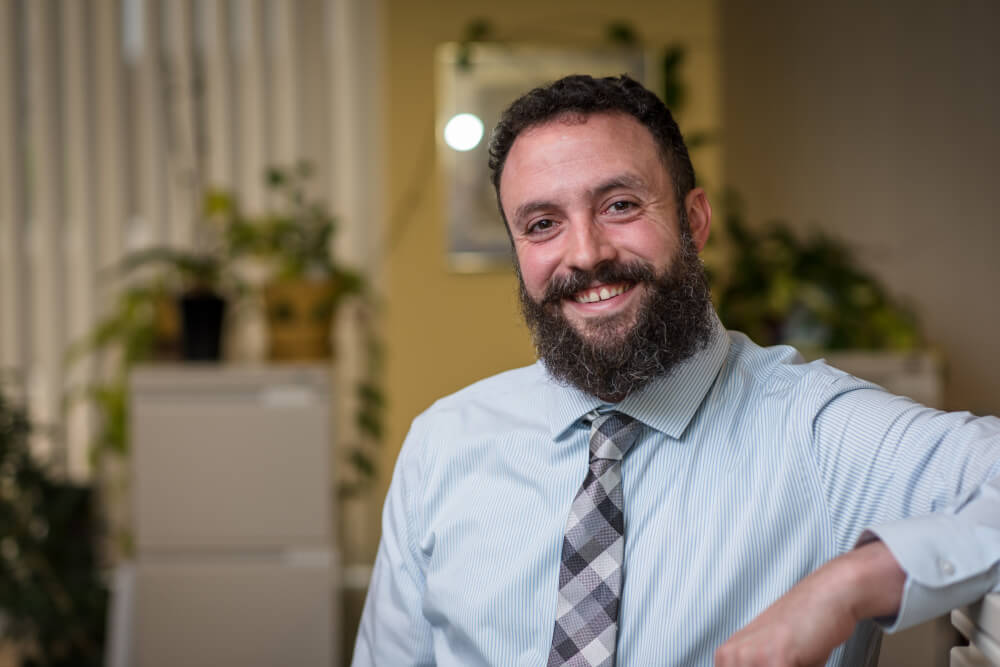No athlete welcomes an injury, but a simple scratch may have saved Rich Oakley’s life.
Oakley was diagnosed with cancer in 2003, as a high school senior, after a scratch from a sports injury led to a swollen neck. When the swelling didn’t subside, Oakley’s mother brought him to the doctor for tests, which revealed that he had stage 1A Hodgkin lymphoma. He immediately began treatment at Dana-Farber.
“The whole thing seemed like fate,” says Oakley. “Who knows if they would have caught it so early if it wasn’t for that scratch.”
Under the care of Corey Cutler, MD, MPH, a physician in the Adult Stem Cell Transplant program, Oakley underwent a series of chemotherapy and radiation treatments. But while his treatment ended in August 2003, his Dana-Farber story was just beginning.

After earning a Marketing Communications degree from the University of Massachusetts Dartmouth and a certificate in graphic design from the New England Institute of Art, Oakley set his sights on returning to the place that saved his life. In 2010, he was hired as a research operations coordinator for the labs of James Bradner, MD—formerly of Dana-Farber and now president of the Novartis Institutes for BioMedical Research—and Anthony Letai, MD, PhD. While Oakley enjoyed the work, he always eyed a transition to a communications role.
His chance came in 2015 when a position opened at Dana-Farber/Harvard Cancer Center (DF/HCC) & Research Communications. Oakley jumped at the opportunity. Today he manages both the communications for DF/HCC—promoting collaboration across the member institutions of this consortium-style cancer center—as well as the department of Research Communications at Dana-Farber. Some of Oakley’s current projects include a Dana-Farber research newsletter and short faculty videos, which serve as introductions for new members joining the team. His long-term goal is to continue to grow the database to enhance communication across labs.
“I always wanted to be a scientist when I was little, but I am not a scientist,” says Oakley. “Now, one way I can impact science is by helping researchers be aware of each other’s work as well as internal and external resources available to them.”
“I’m proud to be one of the numerous former patients who are working at DFCI,” says Oakley. “I hope, in some small way, my work can help to push the science forward.”
